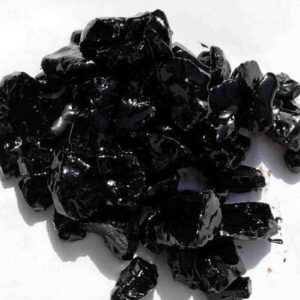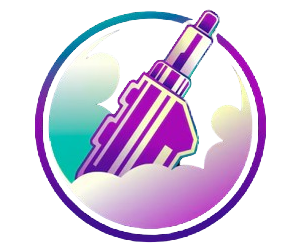Buy Black Tar Heroin online | Order brown rock Heroin | White Powder Street Heroin for sale
Buy xanax online | Order xanax online | xanax for sale
May 28, 2019- buy cocaine online with credit card
- Buy crack Cocaine online buy pure Cocaine onlin| buy Coke | cocaine for sale online
- Buy good quality Cocaine and other drugs online
- Buy Powder Cocaine Online
- cocaine Hydrochloride for sale online
- cocaine |Cocaine online | buy powdered cocaine online
- cracked cocaine for sale
- Cut and uncut cocaine for sale online
- freebase cocaine for sale online
- order cocaine online COD
- Order Powder Cocaine
- Powder Cocaine
- Powder Cocaine for sale online
- powdered cocaine for sale online | order cocaine online
- Purchase Powder Cocaine Online
- rock cocaine for sale
- We are suppliers of Cocaine Powder Both Cut and Uncut
- where can i buy cocaine

Buy Black Tar Heroin online | Order brown rock Heroin | White Powder Street Heroin for sale
Buy Black Tar Heroin online | Order brown rock Heroin | White Powder Street Heroin for sale
Heroin, which comes from the sap of the opium poppy plant, is an addictive street drug made from morphine. It comes in many forms, colors, textures and cuts, and the most popular type of heroin can vary by region.
RELATED PAGES
Heroin Addiction
Heroin Addiction
Types of Heroin
Brown Heroin
Black Tar Heroin
China White
Speedball
Fentanyl vs. Heroin
Signs of Heroin Use
Heroin Treatment
Heroin Detox
Heroin FAQs
Drug trafficking organizations from several countries smuggle heroin into the United States. As a result, different types of heroin are sold in different parts of the country.
All types of heroin can lead to heroin addiction and overdose. In 2016, more than 13,000 Americans died from a heroin-related overdose. Many of those overdoses resulted from heroin that was laced with fentanyl, a man-made opioid that is 30 to 50 times stronger than heroin.
White Powder Heroin
Most heroin sold east of the Mississippi River is a white to off-white powder that comes from Mexico and South America.
Although white powder heroin is more refined than other forms of the drug, heroin sold on the streets is never pure heroin. Dealers typically mix the drug with cutting agents to stretch their supply and increase profit.
“A lot of the heroin we have in the United States has at least six major impurities from the heroin manufacturing process.”
— THOM BROWNE, PRESIDENT AND CEO OF RUBICON GLOBAL ENTERPRISES, HONORARY PRESIDENT OF INTERNATIONAL SOCIETY OF SUBSTANCE USE PROFESSIONALS
Common cutting agents include lactose, quinine, talc, sugar and caffeine. These additives can change what heroin looks like. They account for variations in color, which can range from white to beige to pink.
Because white powder heroin dissolves easily in water, most heroin users shoot the drug. Some people snort it. It’s not usually smoked because it burns at a much higher temperature than other forms of heroin.
White powder heroin sometimes smells like vinegar and has a bitter taste. The fine white powder can easily be mistaken for cocaine.
Black Tar Heroin
Black tar heroin is a dark-colored form of heroin that ranges from a gooey consistency to a hard, rock-like form.
Produced in Mexico, black tar heroin is the most common type of heroin available west of the Mississippi River. But recently it’s been turning up more frequently in the Midwest and on the East Coast.
Sometimes called chiva, Mexican tar or black, black tar is less refined than powder forms of heroin. The dark color, which can range from a deep red color to dark brown to black, comes from contaminants in the refinement process. This form tends to have a strong vinegar smell.
Black tar heroin is usually diluted and smoked or injected. It can also be snorted, but it has to be ground down first. Injecting black tar heroin can lead to numerous health problems, including serious skin infections.
Brown Powder
Brown powder heroin, which is produced in Mexico, is an increasingly common form of heroin. Brown powder used to be sold primarily in the western United States, but it is also showing up in cities in the Midwest and along the East Coast.
Often called Mexican brown, brown powder is more refined than black tar heroin but less expensive than white powder heroin. Some brown powder is created from black tar heroin that is crushed and cut with other additives to make it easier to snort.
Because it can be smoked or snorted and doesn’t have to be injected with a needle, brown powder has gained popularity among suburban teens and others who might never before have considered using heroin.
Brown powder can range in color from light beige to a dirty brown depending on its cutting agents.
Other Types of Heroin
Amid the ongoing opioid epidemic, other forms of heroin have also appeared on the streets. Some of these drugs contain a dangerous mix of heroin and other drugs, such as fentanyl or cocaine.
“Sometimes neither the dealer nor the buyer knows what’s in the product.”
— RICHARD BAUM, FORMER ACTING DIRECTOR OF THE OFFICE OF NATIONAL DRUG CONTROL POLICY
China White
At one time, China White referred to a very pure form of white powder heroin from Southeast Asia. Today, people usually use the name as a slang term for powder heroin that contains heroin mixed with fentanyl or other designer versions of fentanyl. China White can also refer to fentanyl alone.
The drug has a lethal reputation, and fentanyl-laced heroin has been linked to the recent spike in opioid-related overdose deaths. Compared to heroin, fentanyl is 25 to 50 times stronger.
Speedball
A speedball is a mix of heroin and a stimulant, such as cocaine.
According to the National Institutes of Health, the two drugs in combination create a dangerous “push-pull” effect on the body. While the heroin acts on the central nervous system to slow breathing and cause drowsiness, the cocaine revs up the heart and blood pressure and causes anxiety.
Speedballing can lead to a stroke, heart attack, aneurysm or respiratory failure. Speedballs are also increasingly tainted with fentanyl, a potent synthetic opioid that can cause overdose and death.
Gunpowder Heroin
A stickier and reportedly more potent version of black tar heroin called gunpowder heroin has been popping up on the West Coast. According to a 2016 study in the Journal of Psychoactive Drugs, gunpowder heroin is a crumbly substance resembling dried coffee.
Scramble
Scramble is a mixture of white or brown powder heroin and other substances packed into a gelatin capsule. It can contain a wide range of additives, including quinine, lactose, fentanyl, crushed opioid pills and benzodiazepines. Scramble is a popular form of heroin in Baltimore.
As heroin use in the United States rises, the nation’s heroin supply has become increasingly diverse and deadly. No form of heroin is safe to use. If you or someone you love is experiencing problems related to the drug, heroin treatment is the best option for achieving long-term sobriety.
